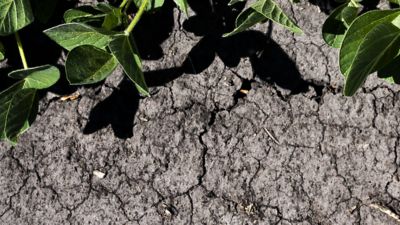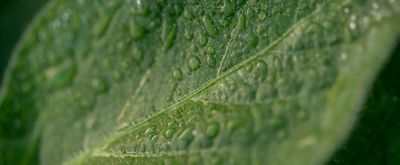Mitigating Herbicide Carryover After Drought
There is potential for a higher-than-normal carryover response to herbicides applied the prior season — but there are a few ways to reduce risk.
See HowIf soil around germinating soybeans is waterlogged for two days, yield losses may be minimal. Any longer, and you will see measurable losses — even plant death. So when is the right time to plant soybeans if heavy rainfall is a concern for your region? Read on for more information about the effects of heavy rainfall, diseases and fungus on your soybean plants.
Soybeans require oxygen to produce energy. But depending on soil type, waterlogged soil may reduce a plant's access to that oxygen. Typically, the longer the soil remains saturated, the greater the potential for yield loss. Soybeans can typically withstand overly wet conditions for 48 hours. Keep in mind that clay and silt soils tend to retain moisture longer than sandy soil.
After a rainfall, wait to evaluate planting times until water recedes and the soil is no longer waterlogged. You're looking for at least a 24- to 48-hour period without heavy rainfall before beginning planting.
Also be aware that excess rainfall may lead to soil compaction, which can affect early season growth and development and reduce the ability of seedlings to take root. Compaction near the soil surface can significantly reduce yield under certain conditions but is generally more manageable and does not persist in the soil for very long. Deep compaction is more difficult to eliminate and can negatively affect crop growth and yield for years after the compaction took place.
And, of course, even if you successfully navigate planting and germination phases, excess rainfall can mean you need to watch for longer term issues such as seedling diseases and fungi.
Saturated soils increase the risk of seedling diseases in soybeans. Pythium is adept at targeting new seedlings in waterlogged soils and Phytopthora can start infections in early summer.1
Moist conditions, cooler weather and cooler soil combined is ideal for fungus like Fusarium (Fusarium virgulifome) and diseases like sudden death syndrome.
If you have not finished planting, wait until the soil drains before planting additional seed. Also check for soil compaction; if present, be sure to address it to increase the likelihood your seeds will take root and hold the necessary amounts of water for growth.
If all seeds are already in the ground, wait until drier conditions to dig up a few plants from across your fields. Search stands for signs of infection including blackened and withering roots. Based on the volume and severity of the disease, additional seed may be necessary to boost stand count, or a full replant may be required.
Some evidence suggests heavy rainfall, wind and cooler temperatures may repress certain species of insect that feed on soybeans. This may apply only in the event of extreme weather conditions, like hurricanes and their associated aftereffects.2
One-half to one full inch of rain is necessary to activate residual herbicides that help control soybean weeds. But too much rain can reduce its effectiveness or even wash it away. Possible solutions: Choose herbicides with lower water solubility and high soil absorption; or divide your herbicide allotment into two applications.3
While intense rainfall may wash away some nutrients from soil, a more likely scenario is that waterlogged soil will deprive your seedlings of oxygen. This should not require you to adjust planting strategies.4

There is potential for a higher-than-normal carryover response to herbicides applied the prior season — but there are a few ways to reduce risk.
See How
You don't have to go at it alone. Your Pioneer representative is ready to help you find the right products and solutions for your farm.
Get In TouchStay on top of industry insights and the latest farming techniques with Pioneer's email newsletter. Sign up now to join the Pioneer community and get curated content sent directly to your inbox.
1. "Flooded soybean,” University of Minnesota Extension, 2018. https://extension.umn.edu/growing-soybean/flooded-soybean#problematic-pathogens-543011
2. “Soybean Considerations Following Hurricane Florence,” R. Vann, North Carolina State Extension, 2018. https://soybeans.ces.ncsu.edu/2018/09/soybean-considerations-following-hurricane-florence/
3. “Effects of Excessive Rainfall on Efficacy of Residual Herbicides Applied in Corn and Soybean,” A. Jhala, University of Nebraska–Lincoln, 2017. https://cropwatch.unl.edu/2017/effect-excessive-rainfall-efficacy-residual-herbicides-applied-corn-and-soybean
4. “Excessive Rainfall on Newly Planted Soybean and Young Soybean,” E. Ernest, University of Delaware Extension, 2013. https://sites.udel.edu/weeklycropupdate/?p=5910
